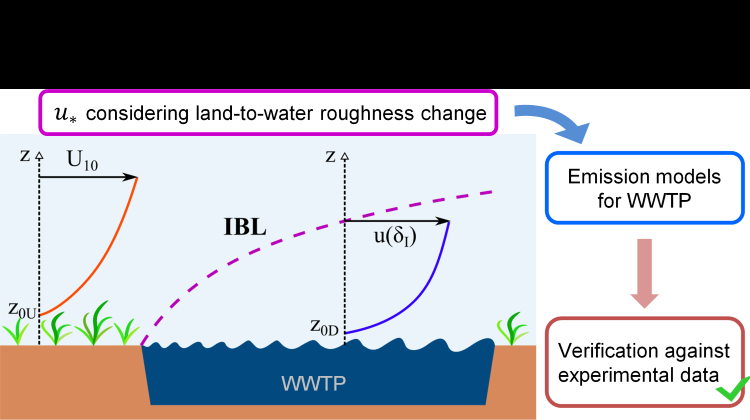New paper from Odour Lab advances science of emission models for wastewater treatment plants
Wastewater treatment plants (WWTP) are critical pieces of infrastructure for the protection of water resources, the environment and human health. Nonetheless, WWTP can also be sources of environmental and social impacts. Atmospheric pollutants emitted from liquid sources in WWTP and other processes can lead to odour nuisance to communities, greenhouse effect and, in some cases, exposure to harmful substances. Odour nuisance, for instance, is currently one of the main cause of complaints received by state Environmental Protection Agencies in Australia. Accurately estimating the emission of air pollutants from WWTP is fundamental for assessing their health risks and environmental impacts, verifying compliance with regulations, and maximising the sustainability of these facilities. Emission models are a tool for estimating the emission rate (i.e., the mass emitted per unit time) of pollutants from WWTP based on a system of equations that try to model the fate of different compounds in the wastewater (liquid phase) and in the atmosphere (gas phase). They are a relatively practical and easy way of estimating emissions, also being useful to make projections of emissions for facilities before they are built. However, although emission models are widely utilised in scientific and engineering contexts, there many knowledge gaps and uncertainties which prevent the successful application of this approach, especially for the case of passive liquid surfaces (the ones without active aeration or intense bubbling).
The paper “Modelling atmospheric emissions from wastewater treatment plants: Implications of land-to-water roughness change”, authored by Dr Ademir Prata and Prof Richard Stuetz (UNSW Odour Laboratory) in collaboration with Prof Jane Santos (UFES, Brazil) and A/Prof Victoria Timchenko (UNSW School of Mechanical and Manufacturing Engineering), makes substantial progress in addressing two fundamental knowledge gaps regarding the calculation of the wind friction velocity (u*), which characterises the wind action on the liquid surface and is a critical input variable in these models. A major knowledge gap arises from the fact that the records of the reference wind speed used in the u* calculation over the liquid are normally measured over land. Due to the change in roughness between the land and the liquid surface, an internal boundary layer (IBL) occurs, and u* over the liquid surface is not in direct equilibrium with the reference wind speed. This means that the correlations between u* and wind speed typically adopted in emission models are not appropriate, compromising the application of existing emission models and their validation. Another critical gap addressed in the paper was the stability of the IBL over the liquid surface (due to vertical temperature and humidity gradients, which lead to density gradients), which is unknown in most practical situations. This stability forcing may modulate u** and the mass transfer process, and this is not accounted for in the typical parametrisations.
In their paper, recently published in Science of the Total Environment, the authors implemented a method that incorporates the roughness change and IBL development into the calculation of u*, which could also be expanded to include the effects of atmospheric stability. It was then shown that neglecting the roughness change/IBL effect (as typically done in emission modelling for WWTP) can lead to systematic overestimation of emissions. Accordingly, a modelling approach was devised, which combines the IBL-dependent u* parametrisation together with an emission model that had been previously developed by the same researchers. Assessment against available experimental data on liquid-gas mass transfer, including field measurements, supported the adoption of this approach for modelling the emission of compounds from WWTP. This was the first time that the u* calculation considering land-to-water roughness change was integrated to emission models for WWTP, and the independent verification of these models against field data was also unprecedent. Furthermore, this was also the first investigation of the potential influence of atmospheric stability on u* over WWTP.
Full reference:
Prata, A.A., Santos, J.M., Timchenko, V., Stuetz, R.M., 2021. Modelling atmospheric emissions from wastewater treatment plants: Implications of land-to-water roughness change. Science of The Total Environment 792, 148330.
https://doi.org/10.1016/j.scitotenv.2021.148330
Link for free access (until 7 Aug 2021): https://authors.elsevier.com/a/1dG2l_17GgI5xf





